Many of you will be familiar with Imperium, one of the Workshop's latest ventures in to science-fiction games. Knowing what to do next can be a problem when playing any new game. It can be especially difficult with a different game like Imperium. Kosnett's article on economics in Imperium should be of some help.
Imperium is an outrageous space opera in the tradition of much 1930's hackwork of the "Earthman's Burden" school - stories of Man's expansion to the stars as an extension of Caucasian imperialism, with the superior humans meeting and besting other races as Humanity took its birthright - the galaxy. Imperium is the story of a barbarian horde rising from the cool, green hills of Earth to crush an ancient, established civilization - the Imperium.
As a game, Imperium is a fast action epic with plenty of swash in its buckle. Best of all, each unit type - each warship, logistic vessel, planetary force and troop division - has its own distinct values and characteristics. In this sense, for all its star- spanning scope, Imperium is a tactical game. Each race must choose carefully in its expenditures to build the best balanced force it can afford, from the pool of units they have designed. So. . . on to Tau Ceti! Destroy them completely! Blast their hides, genocide, rah rah rah!!
 Planetary Defense Unit
Planetary Defense Unit
These are particularly useful because they are multi-purpose units; they fire at ships orbiting the planet that they're based on as well as fight in the mud of Surface Combat. The PDU is expensive, representing as it does a planetwide infrastructure of troops, equipment, and installations. A really important system, say Sol or Gashidda (the homeworlds), or an important junction like Tau Ceti, might rate a PDU. If you put a PDU on a world it has a much better chance of holding out if isolated until the relief fleet arives. Since they're immobile, you may waste money by building a PDU on a planet that's never attacked. Which is what they are for.
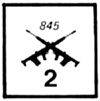 Regular Troops
Regular Troops
These units are the infantry, backed up by vehicles and heavy weapons. They are more cost-effective than PDU's for surface defense, and cheap enough to buy a bunch of in a hurry if your fleet is mangled and you need to defend your worlds and outposts. They can't fire on ships, but they get a first fire on enemy jump troops (due to their heavy weapons) and can be useful in invasions as well, if you have the means to land them without their being chewed up by the intrinsic planetary defense or the PDU's. This requires you to neutralize the defenses to keep transports from being shot down, or sending the troops down in dreadnoughts. Infantry is always nice to have because it shuttles around so quickly.
 Jump Troops
Jump Troops
"To the everlasting glory of the infantry". . . Uh, sorry. Wrong game, same guys. Jump troops are great, cheaper than regular infantry on a per-strength-point basis, just as mobile, and able to land on heavily defended worlds while undergoing minimal ground fire.
The problem is that defending infantry and PDU's get a shot at the landing jumpers before they're organized. If the strong jumpers survive -- and their high combat strength makes this likely -- they should go on to take the planet, if slowly. Jump troops are also useful on the defense, as they are strong and mobile. While, as always, it's a shame to waste elite troops in jobs any grunt could do, they're not irreplaceable.
A "6" jump troop unit defending a planet will take quite an effort to dis- lodge in surface combat.
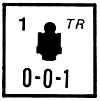 Transport
Transport
You need plenty of these, and they're certainly cheap enough. Any odd resource points left unused at the end of a fiscal year should be spent on transports. They build fast, require no maintenance, and are always in demand to carry troops in assaults, to shift defending infantry between planets, and to carry outposts (massive amounts of equipment and colonists) to empty systems.
The Terran player in particular has a chance to expand towards Ember and Forlorn against no opposition early in the war, and the more transports available the quicker the job will go. The flaw with transports is that they are helpless against enemy ships. Good thing they're cheap. While they can be lost without tears, their cargo often cannot. It's smart to keep transports on a planet surface rather than in orbit in case some enemy scout happens along.
 Tanker
Tanker
You need build only one of these, to move your fleet when it passes through the fuel-poor Sirius system; having a fleet immobilized there is a "sirius" matter indeed.
I recommend keeping a second tanker well to the rear just in case the first one is lost in battle. Keep the spare in an outpost system to avoid maintenance expenditures (more on this little point later).
Also, if you need retreat into fuel-poor, isolated Altair for some reason (like enemy ships in both linking systems), it would be comforting to have that second tanker in the rear to make a jump-start. As for combat, use the same rules as for transports: avoid it. Tankers are a bit more expensive, and there may not be many flying around when you need one badly.
WARSHIPS
Human and Imperial designers have very different ideas on weapons technology. While humans build ships with equal numbers of beam weapons and missile launchers, Imperial craft are heavily laden with missiles. Missiles have longer range, so a ship well-armed with missiles frequently (almost regularly!) blasts its opponent before the Terran can charge in for a powerful beam attack.
Missiles are also used in planetary bombardment to soften up defense units before invasions. Missile ships may also make one-shot high intensity attacks which exhaust ammunition but double attack strength. Beam weapons may be used in "suicide" attacks with a slight advantage in firepower, but only by allowing the enemy ship to take a first shot at the approaching beam ship - like with missiles ail high intensity.
Now, a well-shielded beam ship may very well survive a missile attack. It may even knock out enemy vessels with its weak, secondary missile armament; combat resolution is random, and there's always a chance of a lucky hit. Once it gets into beam range, the beam ship may blast the enemy, but if it misses those missiles can fire again at short range! In any case, there is a bad psychological feeling (called terror) caused by watching missiles zip toward your vessel while you cannot effectively return fire. All in all, beam ships represent inferior weapons technology. Human ingenuity strikes again.
 Scout
Scout
This ship is cheap, but its light armor means it won't be around very long anyway; you'll not get much use out of it. A few scouts are nice to have for delaying actions - a single scout can hold off an enemy fleet making a jump through its system - and, like transports, it's okay to spend pocket change on them. But don't think a whole fleet of scouts is a good idea. You'll have plenty of ships, but you'll lack the staying power to slug it out with heavier enemy ships. And the human scout ship has no missiles at all.
 Destroyer and Light Cruiser
Destroyer and Light Cruiser
These are the basic fighting units. Often three or four destroyers and a cruiser will form a light fleet for defense or for a raid. The extra resource points spent for the cruiser's heavy armor is money well spent. The Terran cruiser is still sadly weak in missiles, but its beam strength is respectable. Note that the destroyer and larger warships are subject to breakdown if you don't spend resource points on maintenance for them.
 It is tempting to place them
outside civilized systems and take your
chances on breakdown, rather than pay
the obligatory maintanence fee for units
left in civilized systems. It's a gamble.
It is tempting to place them
outside civilized systems and take your
chances on breakdown, rather than pay
the obligatory maintanence fee for units
left in civilized systems. It's a gamble.
Destroyers are generally plentiful enough, and their chance of breakdown slight enough that you'll have them around when you need them. By the same token, if you're no gambler, the expenditure for civilized maintenance is slight. But with each new ship, the maintenance budget will grow.
 Strike Cruisers, Heavy Cruisers,
and Attack Cruisers
Strike Cruisers, Heavy Cruisers,
and Attack Cruisers
These ships are sort of extraneous.
The Terran strike cruiser is only slightly more powerful than a missile boat but much more expensive to purchase and maintain.
 While the Terran heavy cruiser is well-rounded, it's not much cheaper than a dreadnought, and much more apt to die.
While the Terran heavy cruiser is well-rounded, it's not much cheaper than a dreadnought, and much more apt to die.
The Imperial strike cruiser is the heaviest ship that may be built without permission from the Emperor (requiring a die roll), and so often plays the battleship role it isn't equipped for.
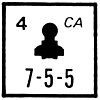 The two other ships are in the same position as the Terran cruiser --
they're fine ships, but without a distinct role. They're simply too expensive for light ship missions and too weak to spearhead a major thrust. Of course, the Imperial governor is in the position of building what he can, so he often makes do.
The two other ships are in the same position as the Terran cruiser --
they're fine ships, but without a distinct role. They're simply too expensive for light ship missions and too weak to spearhead a major thrust. Of course, the Imperial governor is in the position of building what he can, so he often makes do.
Dreadnought, Improved Dreadnought, and Battleship
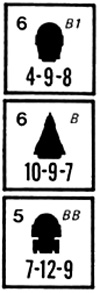 Now these are ships. Strong, with heavy
shields and the same limitless mobility as the
tiny scouts, the "heavies" are just awesome.
A single dreadnought can wipe out a whole
fleet of scouts. The heavies can act as
transports for infantry, carrying them down
in heavily shielded comfort rather than
forcing the troops to face fire from an
unsecured world. But the heavies are
horribly expensive to maintain, and since
once a big ship breaks down it is terribly
expensive to repair, you really have to
pay civilized maintenance costs. The big ships
are best used for a year or three to turn the
tide of a war and then allowed to rot,
permitting the money to be used for other
tasks - including building new big ships in
time of crisis.
Now these are ships. Strong, with heavy
shields and the same limitless mobility as the
tiny scouts, the "heavies" are just awesome.
A single dreadnought can wipe out a whole
fleet of scouts. The heavies can act as
transports for infantry, carrying them down
in heavily shielded comfort rather than
forcing the troops to face fire from an
unsecured world. But the heavies are
horribly expensive to maintain, and since
once a big ship breaks down it is terribly
expensive to repair, you really have to
pay civilized maintenance costs. The big ships
are best used for a year or three to turn the
tide of a war and then allowed to rot,
permitting the money to be used for other
tasks - including building new big ships in
time of crisis.
For that matter, a powerful battleship or dreadnought force is so decisive that it may end the war in a year. Then the game switches over to peace production rules and you'll lose your ships anyway - unless you choose to pay double maintenance costs, which is simply outrageous.
The whole point of the economic rules in Imperium is to illustrate that war is expensive, that it is an ongoing proposition, that providing for an army in the field (or fleet in the sky) is a complex undertaking. Imperium is a simplification, but it makes its point. Now, should the Imperial player get some heavy ships free from the Emperor (on the Imperial Intervention table), wonderful. But building indiscriminately is asking for poverty.
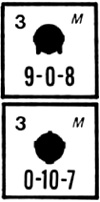 Monitors
Monitors
I like these ships. They are wonderfully strong defensively - and worthless offensively, since they have no jump engines and can move only one hex per turn, using sublight movement. They are cheap, they can be built fast and deployed in any friendly outpost system. An outpost hex occupied by a monitor, an infantry unit for planetary defense, and backed up by some mobile fleet units is a powerful hedgehog. Some key junction hexes like Barnard's Star and Procyon are perfect locations for a monitor.
Incidentally, the Imperial player is allowed to build one monitor in the Human mold. This is called The-Art-Department- Made-A- Mistake -So -What-The-Hell ship design, happens to everyone. But why build Terran monitor when you can build an Imperial vessel with ten (count 'em) missile factors. Nothing gets by that ship except a dreadnought or a lot of cruisers.
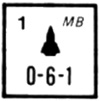 Missile Boat
Missile Boat
This is the answer to these Terran ship captains' demands for missile firepower. It's cheap, powerful, and very weakly shielded. But it's possible to build five for the cost of two similar, heavily shielded strike cruisers and that's a lot of extra missiles. A missile boat cannot operate very well without other ships to screen for it, but in a supporting role it more than pulls its weight in a fleet. No maintenance costs, either.
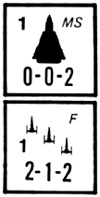 Motherships and Fighters
Motherships and Fighters
Everyone who saw Star Wars builds these as a matter of course, but it makes sense, too. They cost nothing to maintain, they're very cheap once the initial mother ship is paid for, it should never need to be replaced, as it should never be caught - and the fighters are really quite good ships, better than scouts. While a fighter can be immobilized by the loss of its mother (fighters do not have jump engines), this simply is not supposed to happen and rarely does. Fighters are often used to guard a planet, operating from the surface rather than from a mother ship. An individual fighter will not last more than a battle or two, but there are always plenty more to be built.
There is no perfect force. You are limited by your budget, by the number of planets and posts you need defend, and by your Imperial orders if you're a BEM or by your need to expand fast if you're a human. But no one unit type can win this campaign.
You need expendable light vessels for the dirty jobs like raiding and delaying enemy thrusts. You need missile ships for space battles. You need monitors and troops to guard your worlds and posts and you need jump troops to go down and dig out the enemy. You need big ships with great shields to lead your forces. You need transports to support your advance with new outposts and to carry troops into battle. (You could also use a good book on the Pacific in WWII to tell you what's going on here.) Above all, experiment! Innovate!
Imperium is not a giant step forward in simulation art, nor is it particularly brilliant or original science -fiction. It is a fun, challenging game with a multitude of decisions to be made. Don't take it too seriously, stay flexible, and try to maintain a high level of race hate throughout. Punch their antennae; kick 'em in the eye! Tear off their chitin; fry, BEM, fry!
More Tactics in Imperium
Back to Grenadier Number 2 Table of Contents
Back to Grenadier List of Issues
Back to MagWeb Master Magazine List
© Copyright 2000 by Pacific Rim Publishing
This article appears in MagWeb (Magazine Web) on the Internet World Wide Web. Other military history articles and gaming articles are available at http://www.magweb.com